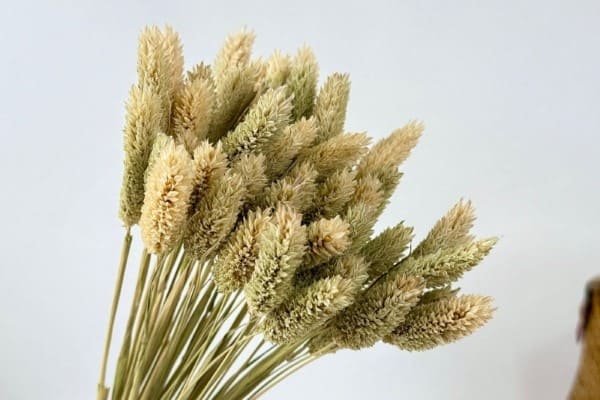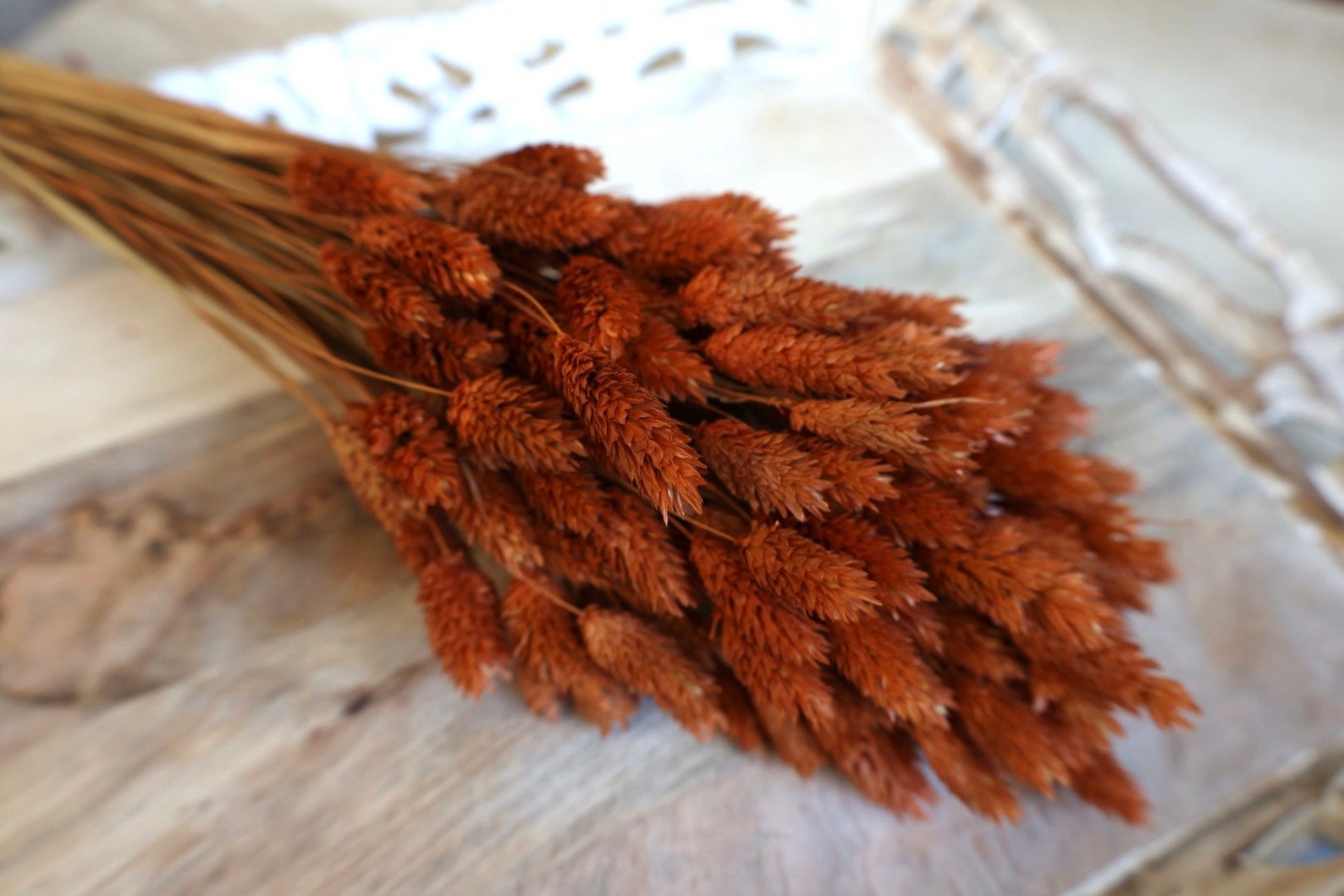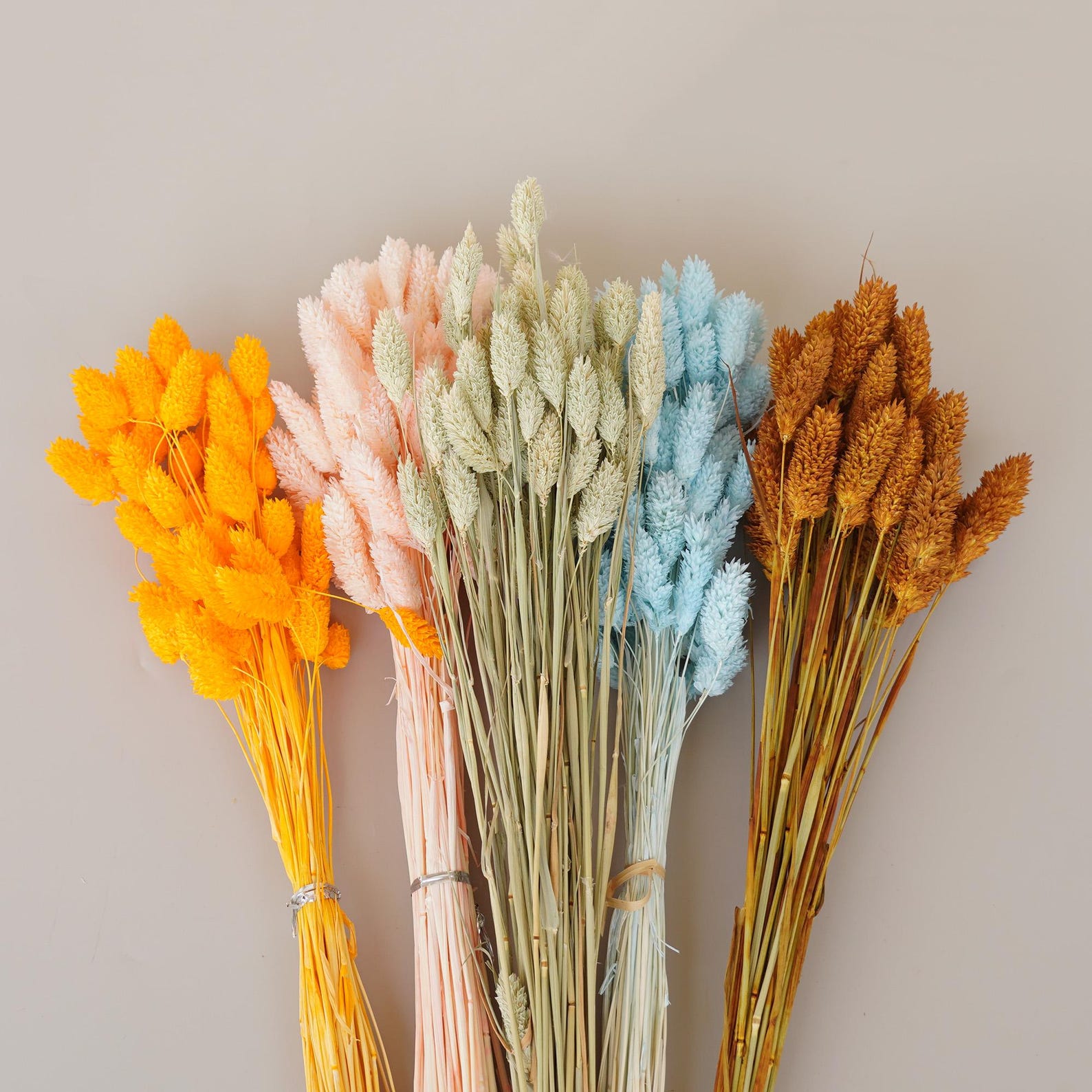


Floral arrangements have been a timeless way to enhance the beauty of a space, whether it’s for a special event, a holiday, or simply everyday décor. In recent years, dried flowers, particularly dried grasses such as Phalaris, have gained popularity due to their long-lasting nature, versatility, and eco-friendliness. Dried Phalaris, with its compact, oval-shaped heads and delicate stems, offers a wonderful textural element that can enhance any arrangement.
In this guide, we'll delve into the art of creating a balanced floral arrangement with dried Phalaris. We’ll cover the basics of choosing complementary flowers and grasses, how to create visual balance through structure, color, and texture, and some tips on the practicalities of working with dried flowers. Whether you're a seasoned florist or a beginner, this detailed article will provide you with all the knowledge you need to create stunning arrangements with dried Phalaris.
Before diving into the specifics of arranging Phalaris, it's important to understand the unique qualities that make it such a valuable addition to floral compositions.
Dried Phalaris (Phalaris arundinacea) is commonly known as Canary Grass and is appreciated for its small, tightly packed heads that are typically an inch or two long. They come in natural greenish-yellow tones but are often dyed in a variety of colors, from soft pastels to vibrant shades, which can fit into almost any design style. Their thin, wiry stems allow them to be easily manipulated into both structured and organic arrangements.
Phalaris provides excellent texture, helping to break up the smoothness of more traditional blooms like roses or peonies. Its compact heads and upright form make it an ideal filler flower, adding height and dimension without overwhelming the primary focal flowers in an arrangement.
One of the primary benefits of dried Phalaris is its durability. Unlike fresh flowers, which typically last for a week or two, dried Phalaris can last for months or even years with proper care. This makes it a sustainable option that can be reused for different events or throughout various seasons.
Phalaris can be incorporated into a variety of floral styles, from rustic and bohemian to modern and minimalist. Its neutral tones and variety of available dyed colors allow it to blend seamlessly into different design aesthetics.

Creating a balanced floral arrangement involves the careful consideration of several elements, including structure, color, texture, and proportion. To successfully integrate dried Phalaris into your arrangement, these factors must be taken into account.
The structure of your floral arrangement refers to its overall shape and how the elements are arranged to create balance. There are various forms to consider, including round, asymmetrical, vertical, or horizontal arrangements.
Color plays a crucial role in achieving balance in a floral arrangement. Dried Phalaris is available in natural, bleached, or dyed colors, which allows for greater flexibility in color matching.
Texture is another important consideration in floral design, and dried Phalaris excels in this area. The small, tightly packed heads of Phalaris create an interesting contrast to larger, softer blooms like hydrangeas or roses, as well as spiky or feathery elements like pampas grass or bunny tails.
When creating a balanced arrangement, it’s important to mix a variety of textures. Using Phalaris in combination with different types of flowers (like smooth, round blooms and airy filler flowers) can add depth and interest to the arrangement. The key to balance is ensuring no single texture overwhelms the arrangement. For example, if you have a lot of soft, delicate flowers, Phalaris can provide a grounding element, balancing out the lighter textures.
Proportion refers to the size of the elements in your arrangement relative to one another and to the container. For a balanced arrangement, consider the rule of thirds, where the height of the flowers should be approximately 1.5 to 2 times the height of the container. Phalaris, with its slender, elongated form, is ideal for adding height without overpowering the arrangement.
If you're working with a tall vase, using longer stems of Phalaris can create a striking vertical element. In shorter arrangements, trimming the Phalaris to fit within the height of the other flowers ensures that it enhances rather than dominates the overall design.
Now that you understand the basics of balance, color, texture, and proportion, let’s dive into the practical steps for creating a balanced floral arrangement with dried Phalaris.
Place your focal flowers in the vase first. These will be the largest flowers in your arrangement and will act as the main focal point. Arrange them in a way that creates visual balance, ensuring that they are spaced out evenly. If you’re creating a symmetrical arrangement, ensure the flowers are evenly distributed; for an asymmetrical design, group the flowers more heavily on one side.
Once the focal flowers are in place, begin adding the dried Phalaris. Insert the stems at varying heights to create depth and dimension. For a balanced look, distribute the Phalaris evenly throughout the arrangement. In a symmetrical arrangement, the Phalaris should mirror the placement of the focal flowers; in an asymmetrical design, it can be used to draw the eye upward or outward.
Next, add your filler flowers and other textural elements, such as bunny tails or pampas grass. These elements should complement the focal flowers and Phalaris without overwhelming them. Be mindful of how these elements interact with the Phalaris; for example, delicate filler flowers like baby's breath can soften the structure of the Phalaris, while bold grasses like pampas can add even more height and texture.
Step back and take a look at your arrangement from all angles. Adjust the placement of the Phalaris and other elements as needed to ensure balance. Pay attention to the overall shape, ensuring there’s a natural flow from one side of the arrangement to the other.
Once you're satisfied with the balance, make any final adjustments to the height of the stems, ensuring that the Phalaris adds both height and interest to the arrangement without overpowering the other elements. You can also adjust the angle of the Phalaris to create more visual movement.

Creating a balanced floral arrangement with dried Phalaris requires a thoughtful approach to structure, color, texture, and proportion. By carefully considering these elements, you can craft a stunning arrangement that highlights the unique qualities of dried Phalaris while complementing other flowers and textures.
Whether you're designing a simple arrangement for your home or a more elaborate centerpiece for a special event, Phalaris offers endless versatility. Its slender, structured stems and textural heads provide visual interest without overwhelming the composition. By balancing focal flowers, filler elements, and greenery or grasses like Phalaris, you can create an arrangement that feels harmonious, dynamic, and visually appealing.
Here are some final key points to keep in mind:
By following these tips and principles, you’ll be able to create beautifully balanced floral arrangements with dried Phalaris that can brighten any space or occasion. Whether you prefer a minimalistic, modern style or a rustic, bohemian vibe, Phalaris will enhance the elegance and longevity of your creations, offering the best of both beauty and sustainability.
Creating a floral arrangement is as much an art as it is a craft, and using dried Phalaris allows you to explore your creativity while benefiting from the practical advantages of working with durable, long-lasting materials. With some patience and experimentation, you can master the art of balancing this versatile dried grass in floral designs that elevate any space.